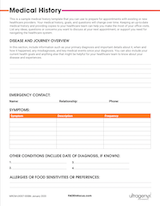
HOW LC-FAOD HAPPENS
LC-FAOD ARE INHERITED
In LC-FAOD, children inherit defective genes that control metabolism. Metabolism is chemical processes that occur within a living cell or organism and are necessary for the maintenance of life. In most situations, to inherit LC-FAOD, both parents are carriers. Each affected child inherits one copy of the affected gene from each parent.
With each pregnancy, parents have a:
- 25% chance of having an affected child with two affected copies of the gene (left)
- 50% chance of having an unaffected child who is also a carrier (middle)
- 25% chance of having an unaffected child with two unaffected copies of the gene (right)
LC-FAOD Disrupt Metabolism
To help you understand the complicated metabolic system, it helps to compare its function to an object you are probably quite familiar with: your smartphone.
